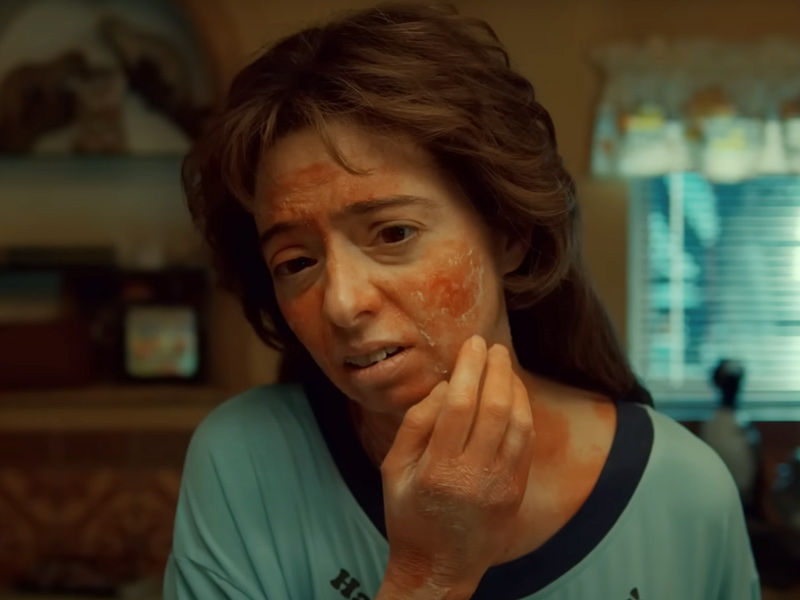The Oscar-winning director’s eight-part anthology is chock-full of delectably wicked tales from some of horror’s most fascinating voices.
Supporting Guillermo del Toro is one of the safer options. He is a seemingly inexhaustible source of fun, whether he is bringing a wooden puppet to life, making Sally Hawkins fall in love with a fish, or defending Martin Scorsese online. In the run-up to Halloween, he’s been producing Cabinet of Curiosities (Netflix), an eight-part series that’s as exquisite as it is hideous. While every anthology series is certain to have hits and mistakes, nothing in this cabinet is worth tossing.

Del Toro wrote two of the episodes but “selected” the others, bringing together eight directors to create self-contained horrors. He appears at the beginning of each episode, much like Rod Serling in The Twilight Zone. Del Toro, on the other hand, strikes a more evil figure, with a stubbornly unsmiling look as he delivers each episode as if it were a cursed thing. The actual cabinet emerges with him, a beautiful wooden edifice resembling a multi-story home; its contents are said to include keys, bones, and unicorn horns.
Meanwhile, Del Toro’s cabinet includes some of the most intriguing voices in horror, such as Jennifer Kent from The Babadook, Ana Lily Amirpour from A Girl Walks Home Alone at Night, and David Prior from The Empty Man. Each, though, stays true to Guillermo’s hallmark aesthetic of the twisted fairytale, complete with stomach-churning effects and grim morals. This is a cabinet where arrogance goes to damnation and cruelty returns tenfold.

Lot 36 is the first picture in the series, directed by Guillermo Navarro, Del Toro’s long-term collaborator who won an Oscar for his work on the director’s greatest film, Pan’s Labyrinth. Lot 36, in which Tim Blake Nelson plays a military veteran who is progressively eaten whole by “alt-right” talking points, has comparable fascist and fantasy themes.
He spends his days avoiding debt collection agencies and selling the materials of abandoned containers. Blake Nelson is fantastic, portraying all of his fascist brainwashing anger and greed but maintaining enough little cracks of compassion to keep the story engaging even when he inevitably stumbles to find a storage container with genuinely horrible items.

Meanwhile, Pickman’s Model is in the hands of The Vigil director Keith Thomas, who embraces Del Toro’s magical promise and Lovecraft’s cosmic dread with a cast lead by the always interesting Crispin Glover. The Viewing, directed by Panos Cosmatos, the avant-garde Nicolas Cage vengeance film Mandy, is the most imaginative of them. This story of a drug trip gone bad culminates in a monstrous creature who appears to be pulled from Del Toro’s inner circle.
The tone shifts throughout the series, but it always keeps one foot in Del Toro’s filmography; the dark humor of the Hellboy films is present in makeover nightmare The Outside, where Stacey (a brilliantly awkward Kate Micucci) plays an amateur taxidermist longing to fit in with her glamorous bank colleagues. Despite her husband’s (Martin Starr) protests, she can’t resist the allure of Alo Glo, which is offered on TV infomercials by a charmingly camp Dan Stevens. It’s a classic “be careful what you wish for” story told with the flair you’d expect from Del Toro and filmmaker Amirpour.

The least terrifying but unsettling entry is maybe the most notable departure from the group. The Murmuring reunites Kent with its actress Essie Davis for a somber story about a pair of ornithologists who withdraw to a remote location to study bird migrations and recuperate from a tragic loss.
Also read: Under The Queen’s Umbrella: tale of a courageous queen looking for the next king
The piece combines the subtle sadness of Kent’s work as well as the tragedy of Del Toro’s orphanage horror The Devil’s Backbone. It also wonderfully illustrates what makes Cabinet of Curiosities such a smashing success.
It allows filmmakers to draw inspiration from the master without suffocating their own creativity, offering Del Toro lots of delectably terrible stuff to tell the audience. There seemed to be no better way to countdown to Halloween than with the certainty that the state of horror is in safe, if dangerous, hands.





























